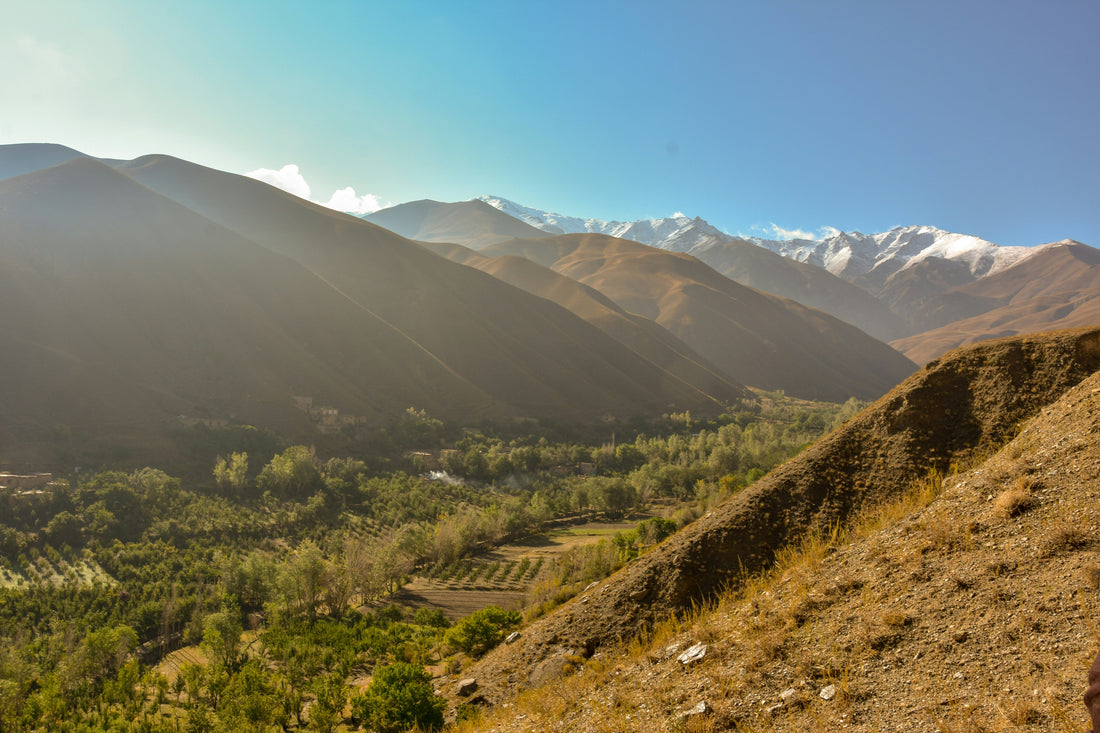
The Whole Truth About Afghan Tourmalines
Share
Beneath the shadows of the Hindu Kush, Afghanistan holds one of the world’s most astonishing mineral legacies. Among its treasures, tourmaline stands out not just for its vivid chromatic spectrum, but for the layered complexity of its origin — geological, human, and political.
This is not simply a gemstone.
It is a fragment of a landscape shaped by time, conflict, and resilience.
A Crystalline Gift from the Hindu Kush
Afghan tourmalines are primarily extracted from lithium-rich pegmatites in the northeastern provinces of Nuristan, Badakhshan, and Kunar. The region lies along the Hindu Kush, a geologically active mountain range known for producing some of the most valuable coloured stones on the planet.
These tourmalines — especially the so-called Nuristani Tourmalines — are celebrated for their intense greens, vivid pinks, and rare watermelon bicolours. What makes them exceptional is not just colour or clarity, but the rawness of their origin. Most are extracted by hand, under extreme conditions, in narrow shafts carved into unforgiving mountain rock.
The Hidden Bazaar of Nuristan
At the heart of this story is a small but vital local market nestled deep in the mountains of Nuristan — a hidden bazaar where miners bring freshly unearthed stones, often still coated in dust. This modest market, remote and difficult to access, acts as a lifeline for Afghanistan’s gemstone economy.
The path to this place is not for the unprepared. Steep cliffs, landslides, narrow goat trails, and untamed rivers make access dangerous, especially during the rainy season. Yet every day, miners from surrounding valleys descend into this bazaar to trade, negotiate, and survive. It is not just a point of sale — it is a cultural and economic node, woven into the daily life of the communities that rely on gemstone extraction as their primary income source.
Without this market, many of these stones would never reach global visibility. It is a fragile but essential link between the depths of the earth and the world of fine jewellery.
A Complex Political Terrain
Since the Taliban’s return to power in August 2021, Afghanistan has been operating in a state of limited international recognition. While security has reportedly improved in some areas, the country’s mining and trade sectors remain informally structured and unevenly governed.
The Ministry of Mines and Petroleum nominally regulates the sector, but in many regions, mining is supervised by local authorities, tribal leaders or informal networks, often outside state control. These groups impose their own systems of taxation and governance, leading to a fragmented and opaque supply chain. A Global Witness report has shown how natural resources — including tourmaline — have historically funded armed groups and war economies.
Yet paradoxically, this same instability has preserved a vast artisanal and community-driven mining culture — one that provides subsistence income for thousands, despite the absence of safety nets.
The Pakistani Trade Route
Once extracted and traded in the local bazaar, most Afghan tourmalines leave the country informally, crossing into Peshawar, Pakistan — a major gemstone trading hub. There, the stones are sorted, graded, and often cut, before being exported to Bangkok, Dubai, Jaipur, and increasingly, Western markets.
This informal corridor, while logistically efficient, presents major challenges for traceability. It becomes nearly impossible to link a gemstone in a European atelier back to a specific mine or community. Worse, the Afghan government receives little to no tax revenue from this activity, depriving the country of much-needed infrastructure investment.
Working Conditions and Ethical Concerns
Tourmaline mining in Afghanistan is not industrialised. It is human, visceral, and often dangerous. Miners work without machinery, without helmets, without any form of protection. Shafts can collapse. Landslides are common. In some areas, children participate in the sorting and washing of stones — not as a form of exploitation per se, but as part of a multigenerational family effort to survive.
There is no healthcare.
No insurance.
No social security.
Yet mining remains one of the few viable economic activities in the region. In this paradox — of hardship and dependence — lies the ethical question that every gem buyer must confront: How do we honour the origin without romanticising the suffering?
Towards Responsible Sourcing
Brands and buyers in the Global North face an urgent choice. Either turn away from Afghanistan and leave communities to the mercy of middlemen — or engage responsibly, transparently, and patiently.
Some organisations, like the International Colored Gemstone Association (ICA) and PACT, are working on programs to improve miner safety, traceability, and sustainability. Others, like Lisbon Gem Exchange, are taking a more direct approach: being physically present in the mountains, buying from miners face to face, paying above market rate, and investing in long-term relationships rooted in respect and dignity.
This is not charity.
This is commerce done differently.
Truth, in Layers
Afghan tourmalines are not just beautiful.
They are complicated.
They come from places that outsiders rarely reach — places of danger, poetry, and human resilience.
To wear one is to carry a fragment of that reality.
Not just sparkle, but substance.
At Lisbon Gem Exchange, we believe that true luxury begins at the source — in the dust, the fire, and the silence of places that have been ignored for too long.
— Lisbon Gem Exchange
Field-sourced. Ethically driven. Obsessed with truth.



